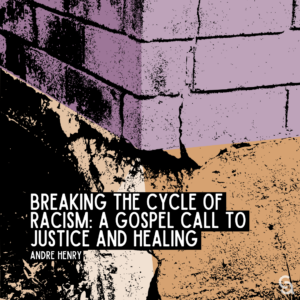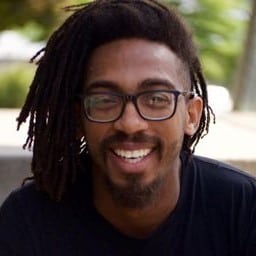 “If a man wants to lynch me, that’s his problem. If he has the power to lynch me, that’s my problem.” When Stokely Carmichael said these words, he underscored the connection between racism and power. His statement suggests that he viewed racism primarily as a structural force rather than just individual prejudice—no matter how violent that prejudice might be. This perspective likely stemmed from the era in which he lived, when the racist infrastructure of the United States was both blatant and brutal.
“If a man wants to lynch me, that’s his problem. If he has the power to lynch me, that’s my problem.” When Stokely Carmichael said these words, he underscored the connection between racism and power. His statement suggests that he viewed racism primarily as a structural force rather than just individual prejudice—no matter how violent that prejudice might be. This perspective likely stemmed from the era in which he lived, when the racist infrastructure of the United States was both blatant and brutal.
Under Jim Crow, it was common for the police—who have the power of the badge, the gun, and the jail cell—to collaborate with the Ku Klux Klan to lynch Black people. If the lynchers were brought to court, they stood before all-white juries who would always acquit them. In that way, the courts used the power of the verdict and procedural justice to ensure that white men could terrorize and torture their Black neighbors with impunity. These examples are just a few of the myriad reasons why someone like Carmichael would be more concerned with racism as a form of structural violence than personal prejudice.
In his book What is Anti-Racism and Why It Means Anti-Capitalism, Arun Kundnani argues that two traditions of anti-racism exist: liberal and radical. The liberal tradition, which emerged in the 1930s in response to Nazi antisemitism, tends to focus on racism as an issue of bad ideas, distorted values, and unenlightened behavior that can be corrected through education.
The radical tradition focuses more on racism as part of a global system of oppression that must be dismantled through struggle. The liberal tradition is preoccupied with the fact that “a man wants to lynch me,” and is focused on exorcising that hateful desire from the heart of that man. It wants to send him to tolerance training, have him read the top-selling anti-racist books, and befriend more Black people. The radical tradition wants to change the conditions that allow lynchings to be so commonplace.
The limits of liberal anti-racism
The liberal anti-racist tradition dominates our common sense around racism in the United States. In an interview with renowned scholar Ruth Wilson Gilmore, Kundani explains that part of his inspiration for his book was “how the liberal institutions of America responded to the insurrection of 2020.”
In response to the Black Lives Matter uprisings’ cries for structural change—abolish prisons, defund the police, etc.—white liberals fixated on “… how to challenge unconscious biases, how to reduce microaggressions in interpersonal relationships, how to better represent diverse identities, how to educate away individual prejudices, and how to fight right-wing extremism.”
The concerns of the liberal anti-racist tradition are important. However, the liberal tradition has proven ineffective in dismantling the infrastructure of racist violence we live under.
For example, police brutality isn’t solved by creating a more racially diverse police force, which only serves to recruit Black people and people of color to participate in the anti-democratic violence the police were created to perform—a violence that is deeply rooted in the anti-Black violence of slavery.
“Even the most diverse forces have major problems with racial profiling and bias,” writes sociologist and long-time advocate for police abolition Alex Vitale. “There is now a large body of evidence measuring whether the race of individual officers affects their use of force. Most studies show no effect.”
In his final book, Where Do We Go From Here: Chaos or Community?, Dr. Martin Luther King, Jr. reflected on the 12-year Civil Rights struggle and laments how racial progress had stalled, quoting a magazine article that said “the black American in Harlem, Haynesville, Baltimore, and Bogalousa is worse off today than he was 10 years ago.”
To make legible the gap between the movement’s aspiration and the state of race relations in the U.S. at that time, King measured racial progress by surveying America’s institutions—invoking statistics showing racial disparity in housing, employment, education, home ownership, and military enlistment to show how far America was from his dream of racial equality.
His conclusion as to why so much in the U.S. hadn’t changed after more than a decade of struggle was that, “For the vast majority of white Americans, the past decade—the first phase [of our movement]—had been a struggle to treat the Negro with a degree of decency, not of equality…but it had never been truly committed to helping him out of poverty, exploitation or all forms of discrimination.”
In other words, white America opted for the more liberal anti-racist tradition—to make the racist structures of U.S. society kinder and more inclusive rather than radically different.
American Christians have a spiritualized version of the liberal anti-racist traditions. One expression of this is the belief that the only solution to racism is divine intervention. When a Christian says that “only the Holy Spirit can change someone’s heart,” in response to talking about systemic racism, that’s an echo of the liberal anti-racist tradition that assumes racism is primarily an internal issue for which the answer is personal transformation. Not only does that type of response ignore the structural nature of racism, it excuses the Christian from action.
Many Christians who do want to be anti-racist get stuck in a more active form of liberal anti-racism. They tend to focus on book clubs, panel discussions, and other forms of education. While education is important, education alone isn’t a direct intervention against the flow of racist power in society. If racism is a structural force, Christians who want to end racism must engage in activities that challenge the societal structure.
A Gospel call to justice and collective action
Fortunately, there are historical examples of Christians practicing a more radical anti-racist tradition. In the United States, the Black church played an essential role in organizing direct action campaigns that included mass noncooperation and civil disobedience that forced local and federal governments to pass Civil Rights legislation.
They didn’t believe it was enough to pray for the end of racism, to preach against it, and to try to educate white people out of their bad beliefs. Instead, they broke unjust laws, disrupted local economies, and sought public—albeit nonviolent—confrontations with their hateful neighbors. This is because, as Dr. King once preached, “Freedom only comes from persistent revolt, from persistent agitation.”
Structural racism still exists today. According to the 2024 edition of an annual study from the National Urban League, the racial wealth has remained unchanged for the past 20 years, “with Black Americans making on average 64% of the income of white people.” The report also revealed that “70 Black women die per every 100,000 child births compared to 26.6 per 100,000 for white women.” Black homeownership, thought to be the key to generational wealth in the states, was 45.5% in 2023, as opposed to 74.5% for whites.
We can’t pray these disparities away, nor can we educate our way out of them. It will take coordinated, sustained, collective action that pressures society into structural change.
 Andre Henry is the Program Manager of the Racial Justice Institute at Christians for Social Action and author of All the White Friends I Couldn’t Keep (Penguin Random House, 2022). He holds a Master of Arts in Theology with an emphasis in Biblical Languages from Fuller Theological Seminary and a Bachelor of Science in Practical Theology from Southeastern University.
Andre Henry is the Program Manager of the Racial Justice Institute at Christians for Social Action and author of All the White Friends I Couldn’t Keep (Penguin Random House, 2022). He holds a Master of Arts in Theology with an emphasis in Biblical Languages from Fuller Theological Seminary and a Bachelor of Science in Practical Theology from Southeastern University.


